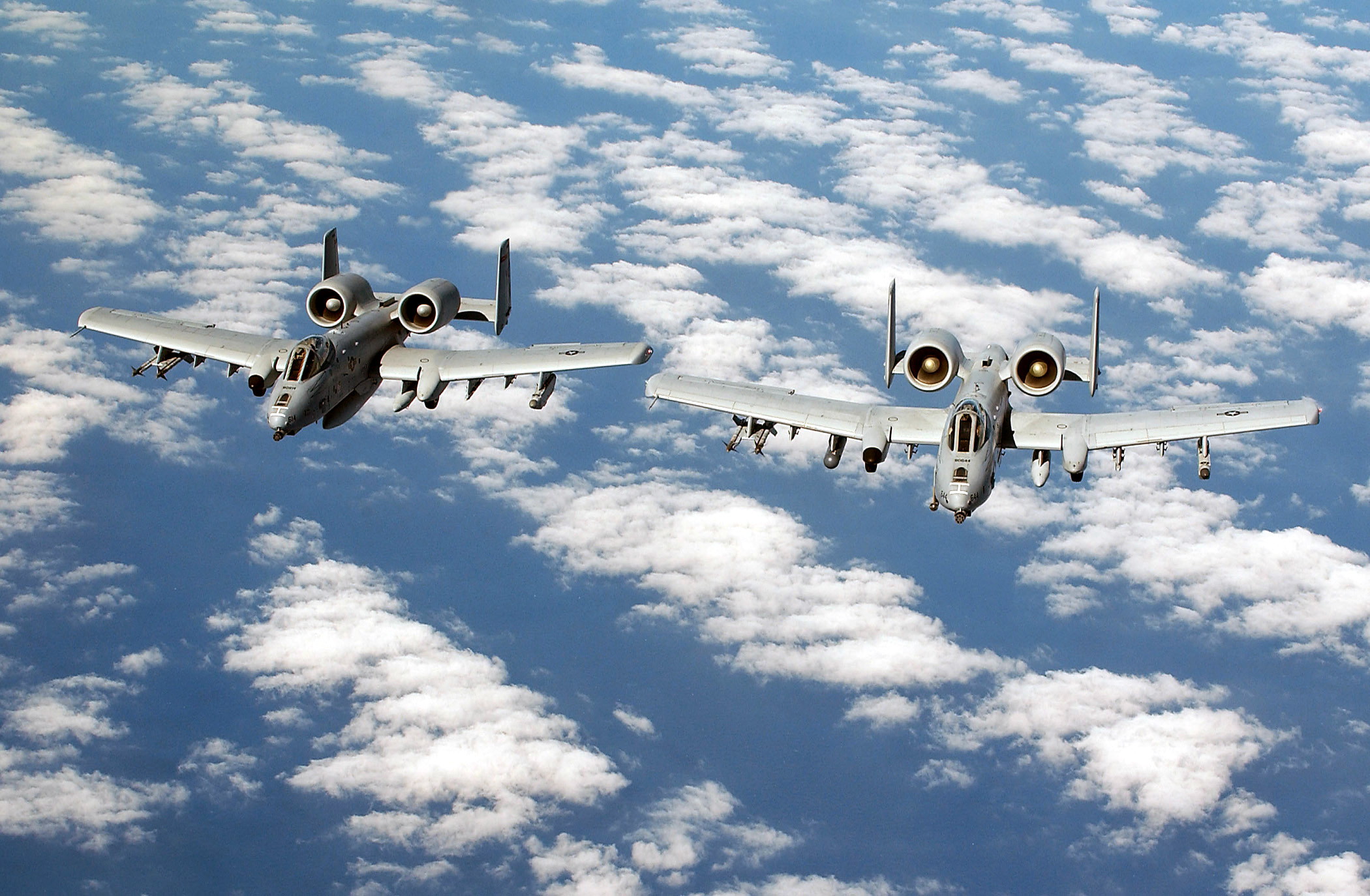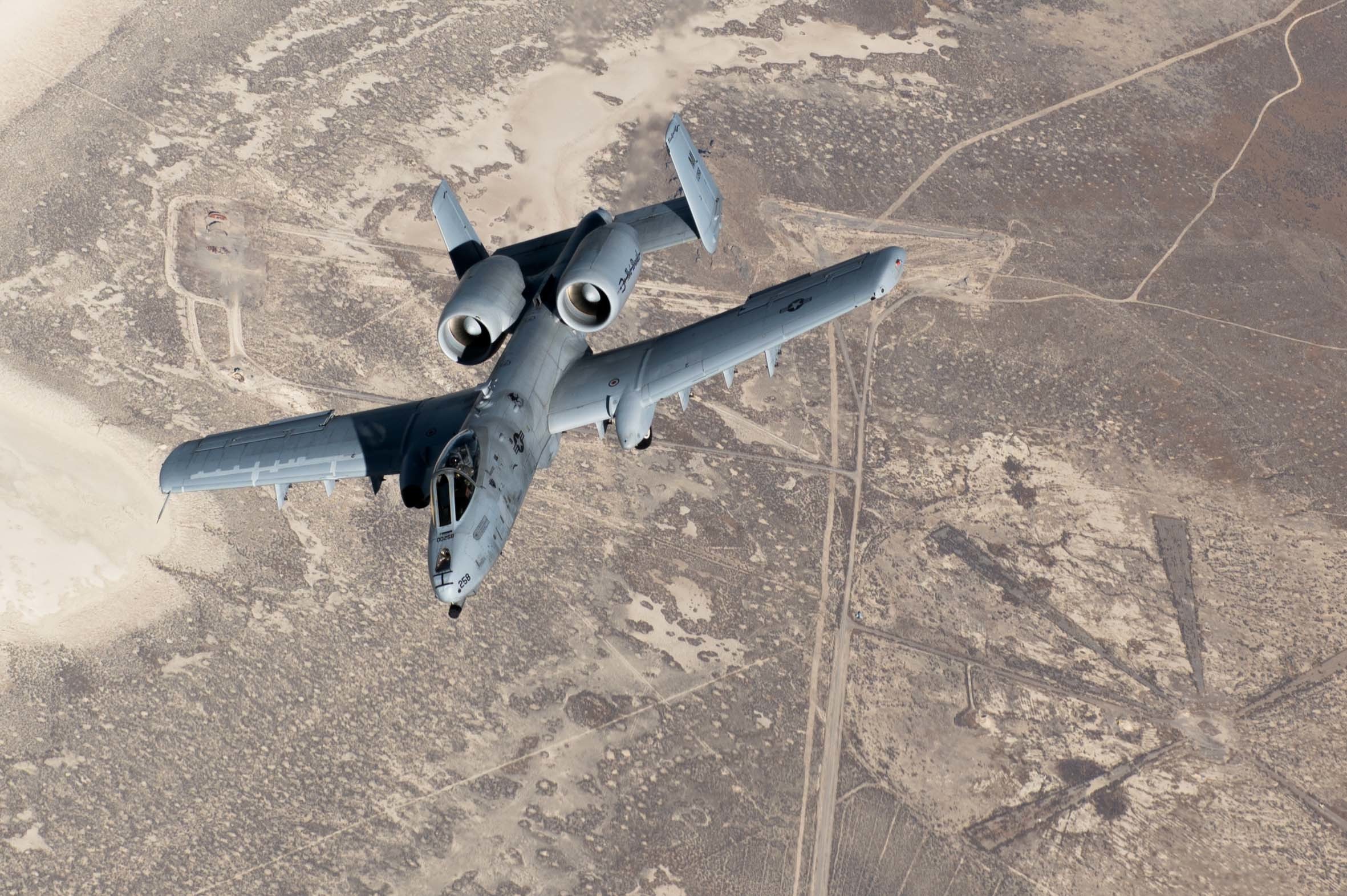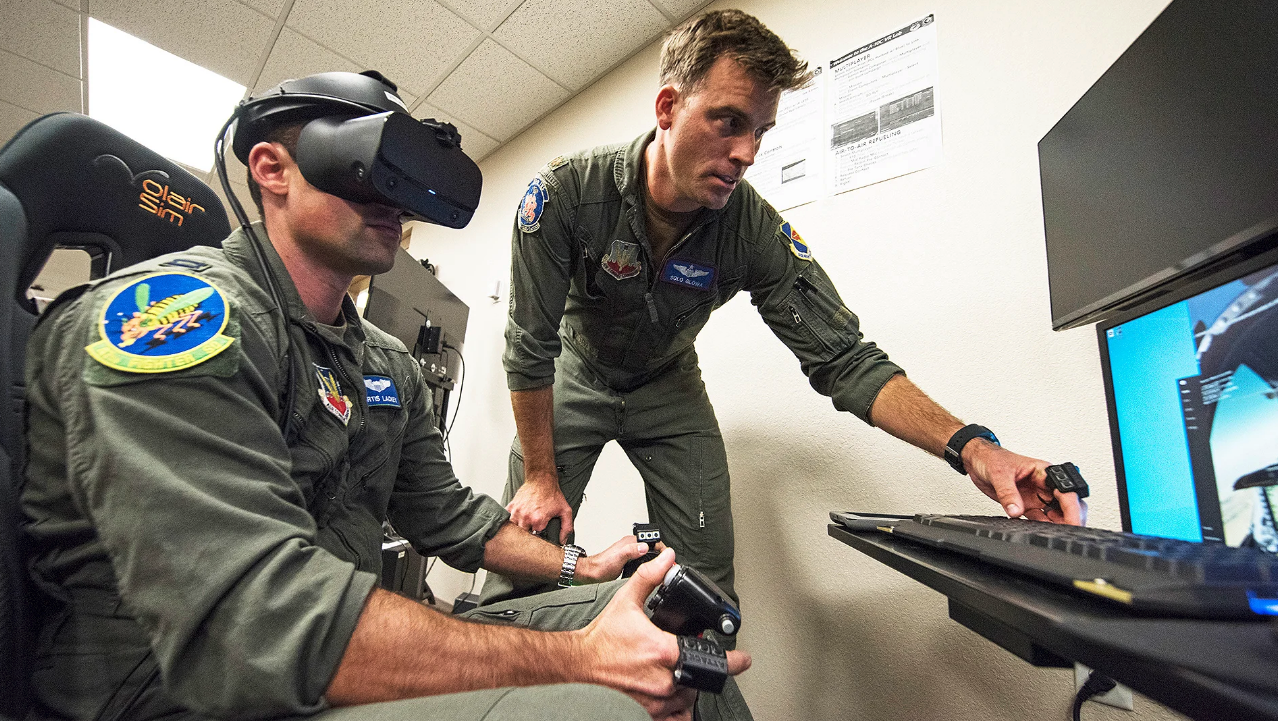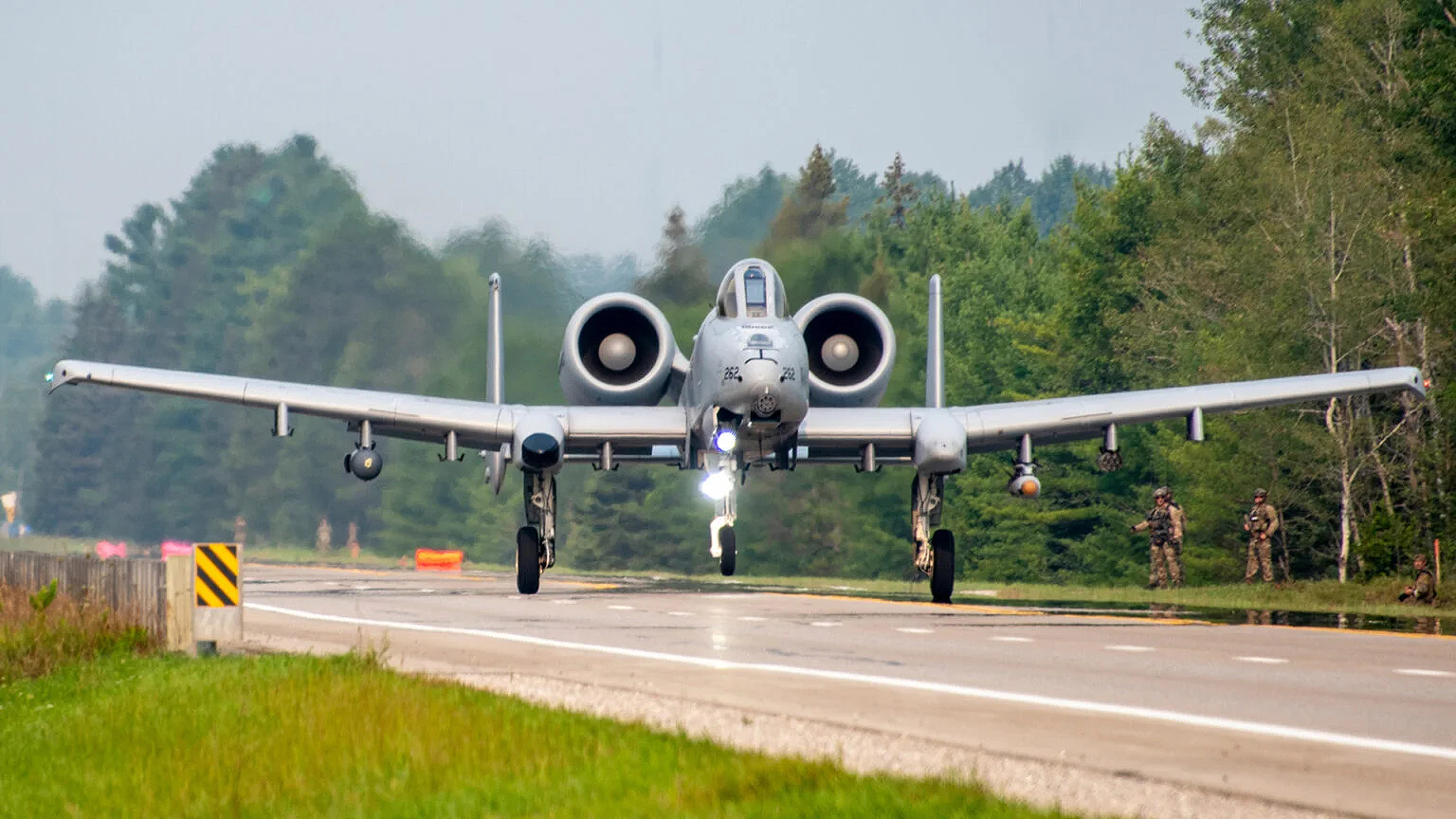According to a feature story published by Time Magazine, an entrepreneurial Ukrainian infantryman has managed to crowdfund the development of a secret A-10 Warthog simulation training center. The iconic attack plane has been a sought-after aircraft of the Ukrainian forces since the start of the country’s conflict with Russia, and their keenness to receive western combat jets of any kind is only further exemplified by the creation of this new facility.
For the article, Time spoke with Alexander Gorgan, described as a 46-year-old “low-level infantry officer in the Ukrainian military with high-level connections,” and the brains behind the grassroots A-10 training center project. Throughout the piece, Gorgan emphasizes the relentless shelling that Russians have been employing against Ukrainian forces during the war, explaining that the attacks could be more successfully countered if they just had the right air support. Gorgan firmly believes that the Warthog is the perfect plane for the job, and even though the United States has been tip-toeing around the possibility of offering them to Ukraine, on top of recent pushback from some in Ukraine, he was ready to start taking matters into his own hands.

The lightbulb went off for Gorgan in March, Time wrote, when he was trapped in a trench in Kyiv while being subjected to a barrage of Russian artillery shells. He recalled that all he could think about was how relieving it would be to know that an A-10 was on its way to suppress the attack that now had him trapped belowground in his home country’s capital. Gorgan then decided to dedicate the next six months to working with fellow Ukrainians as well as American A-10 pilots in whatever capacity the war would allow to both urge the United States to donate A-10s and establish the training equipment necessary to prepare Ukrainian pilots for their potential delivery.
Make sure to check out all of Time.com’s report here, it is really worth its own read.
Training at the facility began in early May and Ukrainian pilots have been using it ever since. After agreeing to be blindfolded during the trip to and from the location, Time was granted access to the A-10 simulation center and noted that it featured “sophisticated” flight simulators that had been designed using “open source YouTube videos of U.S. military trainers in action and built with off-the-shelf components and guidance by retired U.S. military officials.” The facility now serves as yet another example of the fruits of Ukrainian innovation and fundraising borne solely from necessity.

“Each station had a realistic throttle, flight stick, and [virtual reality] goggles linked up to a computer tower that gave off a technicolor glow,” read the Time article. “None of the gear was classified, and most of the components came from a niche of the gaming community that builds flight simulators for fun.”
Gorgan noted that the video game-like nature of the facility was directly inspired by U.S. Air Force A-10 pilots of the 355th Training Squadron at Davis-Monthan Air Force Base in Arizona who use the publicly available Digital Combat Simulator World (DCS) computer game to train in virtual reality. In 2021, The War Zone reported that the 355th had been using the DCS paired with commercially available virtual reality headsets and other gaming gear as a low-cost and more accessible way to supplement the more traditional yet expensive simulation training methods used by the A-10 pilots.

While virtual reality training systems are still in the process of being widely adopted as a way to prepare military and commercial pilots for actual flight, the benefits that they present at a low cost aren’t lost on Ukrainian forces. Training a pilot is a costly and time-consuming process, typically taking years and millions of dollars in government money to do diligently. While the off-the-shelf VR systems and software can’t make up for the real thing or for far more advanced and costly simulators, for that matter, they can offer a ton of value for not much money. Everything from procedures to working with cockpit interfaces to getting the right visual cues for basic airmanship can be had in the VR space, and more.

Even though there have been reports that prior military exchange programs allowed a select few Ukrainian pilots the chance to train on the A-10, Gorgan seemed to believe that the number of Ukrainian pilots with the skillset necessary to carry out the aerial attacks that combat operations require is dwindling.
Gorgan explained that this is due in part to both combat losses and access to resources, which has made it so the pilots that are currently defending Ukraine in its war with Russia are quite the hot commodity. So much so, in fact, that it’s the pilots themselves that are predominately responsible for the secrecy that shrouds Gorgan’s A-10 training facility.
“‘They are more valuable than generals,’ Gorgan says. Even before the Russian invasion, the identities of many active fighter pilots were a closely guarded secret in Ukraine, and all of them lived with the risk of assassination,” the Time article noted.
Since the start of the conflict, some Ukrainian pilots have been flying less capable Su-25 Frogfoots for their daily operations, which are (very roughly) the Soviet-era counterpart to the A-10. In terms of what the A-10 would bring to the table, the American-made Warthog was designed with a high level of survivability. It’s intended to withstand a significant amount of battle damage, and if needed, undergo speedy repairs to get it back up in the air under a strict timeline. Its armament is also diverse and features AGM-65 Maverick missiles, AIM-9 Sidewinder missiles, a wide array of rockets and bombs, and of course, the iconic 30mm GAU-8/A Avenger cannon.

Another argument in favor of supplying Ukraine with A-10s would be that the United States is already moving to retire the fleet, but it’s important to note that the final retirement date is far from assured. In its most recent budget request for the 2023 Fiscal Year, the Air Force proposed retiring 21 Warthogs with a target of the rest of the fleet being gone in just five years. The service has long raised questions about the aircraft’s ability to perform in future high-end conflicts while others are adamant that it still has a key role to play. For its part, the A-10 community is rapidly adapting to be of better value in a peer-state conflict.
The potential for some A-10s to one day end up in Ukraine was further echoed by Secretary of the U.S. Air Force Frank Kendall in July when he indicated to reporters that the A-10 was on the table for Ukraine and that “older U.S. systems” are being considered to fulfill the country’s future air combat needs.

There are, however, those in opposition to the prospect of sending Ukraine A-10s. In an interview with Air Force Magazine published in July, Yuriy Sak, advisor to Ukrainian Defense Minister Oleksii Reznikov, explained that while the A-10 is certainly a capable air support aircraft, it isn’t what Ukrainians need right now. Instead, Sak proposed that the United States send “fast and versatile” systems, which could point to the F-16 or another multirole fighter jet. This is also an idea that the U.S. Air Force has seemed open to in recent months, but nothing concrete has come from either of these propositions yet.
Although in a press call today centered on details about a new U.S. military aid package for Ukraine, a senior U.S. defense official did offer the most recent commentary on this topic in terms of policy:
“This is something where we certainly are looking at the Ukrainian Armed Forces, needs in every domain, in the current and in the future. In the current, our focus has been on capabilities that we can get them quickly that they can use in the current fight in now east and south Ukraine. So, in terms of aviation, we’ve focused on how we can enhance their existing aircraft fleet. That’s where the HARM missiles come into play, giving them that additional advantage. We’ve also sourced from around the world 1,000s of spare parts for their MiGs. But in the future, we’re also looking at other capabilities that we might be able to provide them, and we’re doing work now on what the future of the Ukrainian armed forces will look like. And considering all possibilities.”
All in all, there continue to be indications that the United States is softening on its general opposition to sending Ukrainian combat aircraft of some kind, which might or might not include A-10s.
Regardless, the relatively humble off-the-shelf simulators that Ukrainian pilots are now training on will provide valuable experience with the basic interfaces and control concepts used on western combat aircraft.
One Ukrainian pilot that goes by his callsign “Juice” who has been in regular contact with The War Zone has noted that using off-the-shelf simulation software and hardware to train virtually on western aircraft, especially on things like radar functions and cockpit layout, could help speed up training on western combat jets once the country is cleared to receive them.
So, if Warthogs do eventually end up in Ukrainian hands, or a 4th generation multirole fighter, the country’s pilots would bit more prepared to operate them than they would have been otherwise.
In this war, every little bit counts.
Contact the author: Emma@thewarzone.com
